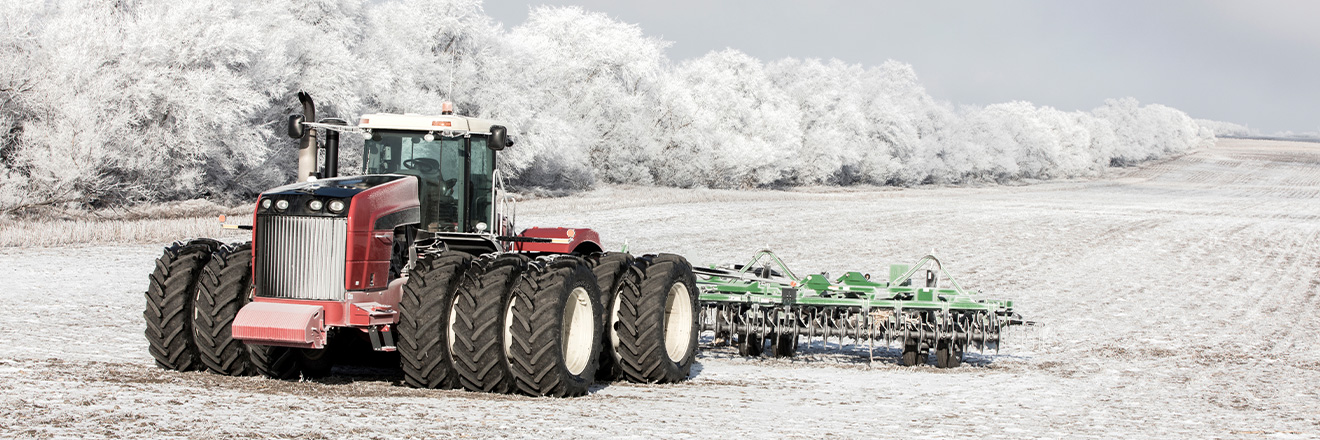Have you considered the effects these temperature changes can have on your equipment's reliability? All machines and lubricants have practical limits when it comes to operating temperatures.
Usually, the focus is only on the upper limit since high temperatures can wreak havoc on the health of the lubricant and the machine, as well as cause safety concerns in some cases. However, rarely do you hear someone discussing the lower limits.
When Cold Air Meets the Lubricant
At extremely low temperatures, such as those experienced during the startup of equipment found outside on a cold winter morning, the fluid within the housing can reach a point where it congeals and will no longer flow. This limit is called the pour point.
In circulating systems, the viscosity becomes so high at this point that the oil flow is restricted. Components will then starve of lubrication, which leads to an early metal-on-metal wear. Of course, circulating systems aren't the only ones that rely on oil flow. Imagine how a splash-lubricated gearbox handles a cool, thick fluid. When these gearboxes are designed properly and using the correct fluid viscosity, oil is brought up to the gear tooth interface and even to the shaft bearings and other reduction stages higher in the gearbox as the gearset runs through the oil in the sump.
Dangerously High Viscosity
When the oil viscosity is increased to the point where it will no longer flow, the submerged gear will push congealed "globs" of lubricant out of the way and will not lift it to the other components within the gearbox that desperately need to be lubricated. Another side effect of the increased viscosity is a higher startup torque. This increased load may be enough to cause a catastrophic failure or at least consume a massive amount of energy because of the excessive fluid friction.
Base Oil Separation
The effects on viscosity are not the only attacks the lubricant must endure from the cold. In extreme cases, blended base oils can begin to separate into different phases. This separation process is called stratification. The additives are also susceptible to becoming insoluble at colder temperatures. When they become insoluble, additives tend to gravitationally separate from the base oil and form deposits at the bottom of the sump.
If the equipment requires these additives and they are in the form of a sludge or deposit at the bottom of the sump, the lubricant's performance will be hindered and the machine could be damaged.
What is considered cold?
Most base oils and greases can withstand moderate temperature dips to 0 degrees Celsius and many to negative 10 degrees Celsius without much decrease in performance. However, at minus 20 degrees C and beyond, some lubricants become unsuitable and begin to reach their pour point.
The pour point is dictated by the base oil quality as well as the presence of certain additives. A good rule of thumb is to always select a lubricant with a pour point that is at least 10 degrees C lower than your lowest expected startup temperature.
Select the Right Lubricant
Having a higher viscosity index means that the lubricant's viscosity does not change as much with changes in temperature as compared to a lubricant with a lower viscosity index. This is a good thing. It allows the lubricant to provide sufficient lubrication over a wider temperature range.
To evaluate cold-weather performance, several ASTM standard test methods can be used, including tests for pour point, low-temperature torque, and flow pressure for greases. In recent years, the research and development of lubricants for use in extreme cold conditions has come a long way and there are now lubricants designed to handle extreme temperatures.
Even though proper lubricant selection is of the utmost importance, there are other more fundamental steps that can be taken to solve your cold-temperature issues. These include heaters, larger feed lines, fewer pipe restrictions in pumping systems, changing application methods, etc. Understanding what happens to your lubricants at cold temperatures is your first line of defense. So the next time you walk into your plant on a cold morning and prepare to start up the equipment, think twice about the consequences of the cold temperatures on your lubricants and the machinery.
